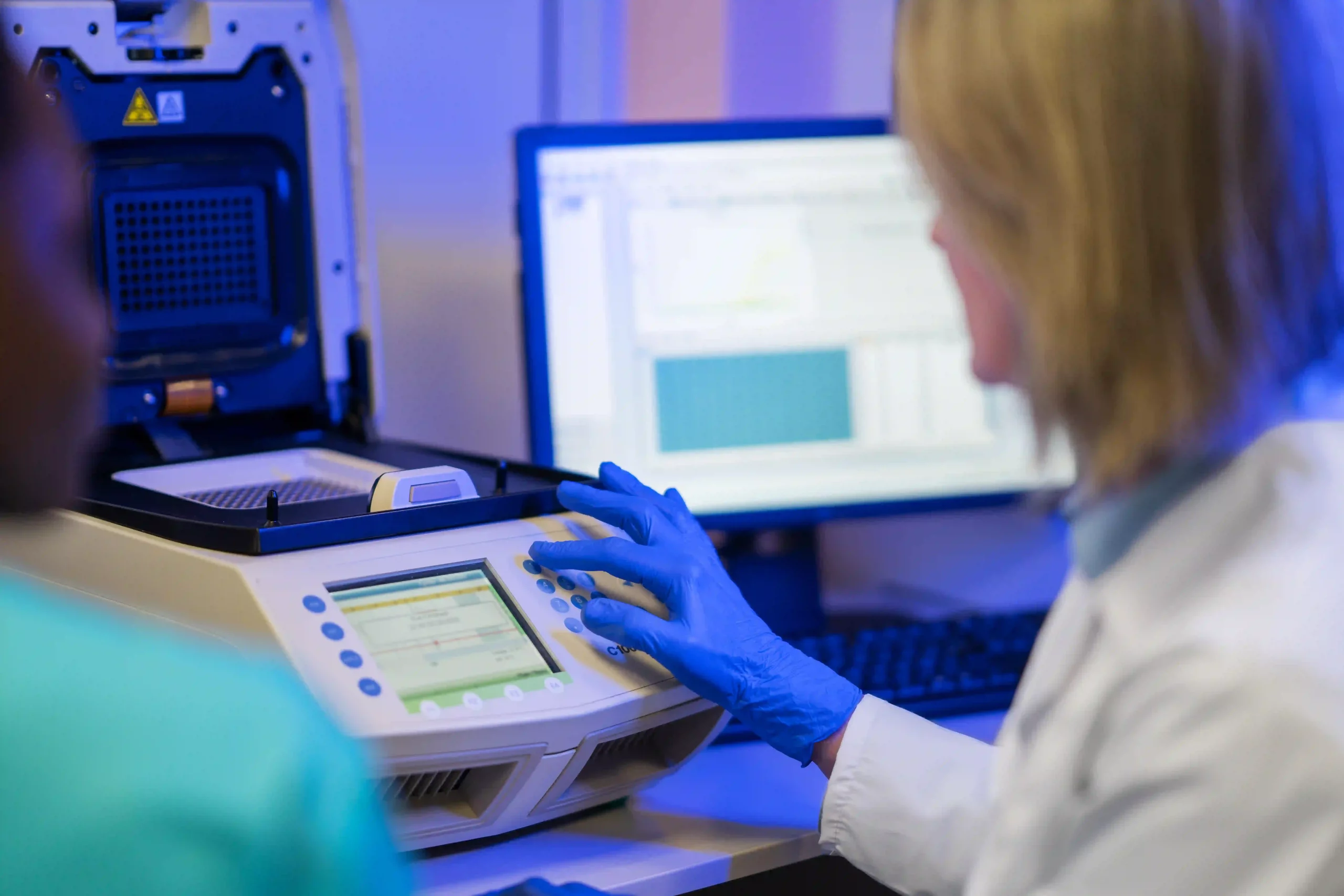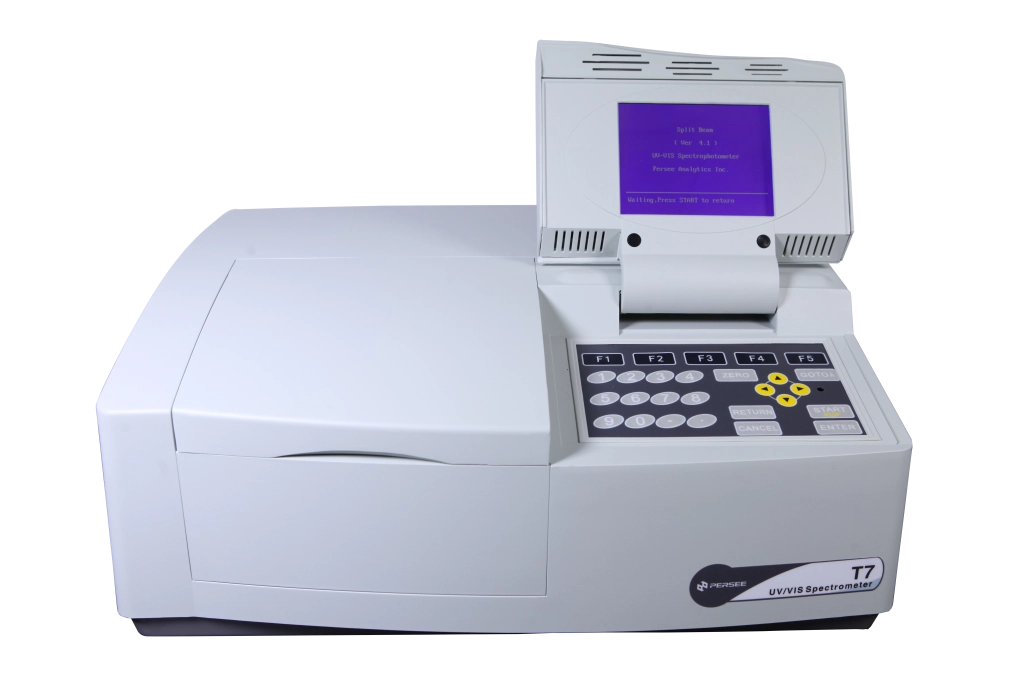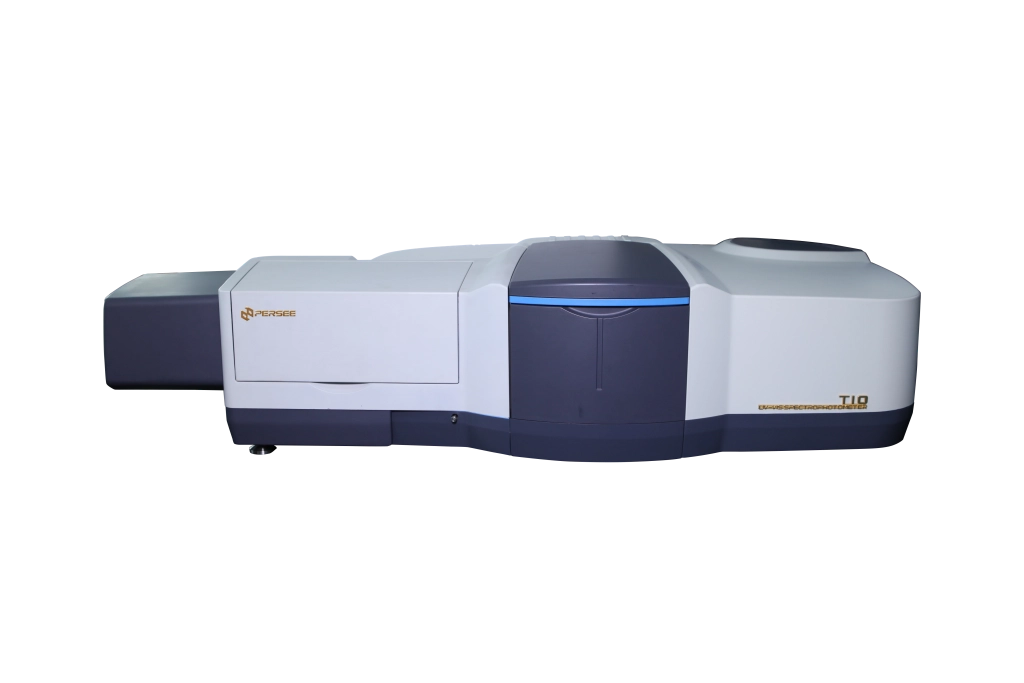
UV-VIS spectroscopy is a popular method used to measure and study substances based on how they soak up ultraviolet and visible light. While this technique is vital in labs across many fields, it has its flaws. Knowing the drawbacks of UV-VIS tools is key to improving results, fine-tuning methods, and picking the right equipment for your needs.
Overview of UV-VIS Spectroscopy
UV-VIS spectroscopy is central to modern chemical studies because it’s simple, quick, and flexible.
Basic Principles of UV-VIS Spectroscopy
At its heart, UV-VIS spectroscopy follows the Beer-Lambert Law, which links how much light a substance absorbs to its amount. The method measures how much light a chemical takes in or lets through. A light beam passes through a sample, and the tool measures the light that comes out. The main parts include a light source, a device to pick one color of light, a sample holder, and a detector to analyze the results.
Common Uses Across Industries
UV-VIS tools are used in drug labs to test medicines, in environmental labs to check water quality, in food industries to measure color, and in biology labs to measure proteins.
Importance in Modern Labs
This tool is common in nearly every chemical, biological, or life science lab. Its widespread use highlights the need to understand both its strengths and weaknesses.
Instrumental Limits of UV-VIS Tools
Despite their popularity and usefulness, UV-VIS tools have built-in flaws that can affect their performance.
Wavelength Range Limits
Most UV-VIS tools work within 190–1100 nm. This range leaves out measurements in far-UV or near-infrared areas. The tools can measure visible light or ultraviolet light down to about 190 nm.
Low Sensitivity for Thin Samples
Standard detectors struggle to spot substances in very small amounts because the light signals are too weak. This makes UV-VIS less useful for detecting tiny traces unless you use extra steps like concentrating the sample first.
Baseline Shifts and Stray Light Problems
Even top-notch tools can face issues with unstable baselines and stray light.
- Causes of Baseline Shifts: The baseline can waver due to changes in the light’s strength or temperature shifts in the tool’s parts.
- Impact of Stray Light: Stray light is unwanted light that reaches the detector. It can mess up results, especially when measuring high absorbance. Tests for tools include checking absorbance accuracy, wavelength accuracy, bandwidth, and stray light.
Sample-Related Challenges in UV-VIS Analysis
The type of sample being tested can also cause problems that affect accuracy and consistency.
Matrix Effects and Cloudy Samples
Cloudy or particle-filled samples scatter light instead of absorbing it evenly. This breaks the rules of the Beer-Lambert Law and leads to wrong results.
Solvent Absorption Issues
Some liquids, like ethanol below 210 nm, absorb light strongly in the UV range. This can hide the substance’s signal unless you use a blank sample to correct it.
Sample Prep Mistakes and Their Effects
Mistakes like wrong dilution, air bubbles, or scratched sample holders can cause big errors. Good sample prep is critical. For example, when making standards, even small mistakes in weighing or mixing can lead to large errors in results.
Operational and Environmental Factors Affecting Performance
Besides tool design and sample issues, outside conditions and human errors also impact results.
Impact of Temperature and Humidity
Changes in room temperature or high humidity can affect the tool’s electronics or light path. This can cause unstable baselines or wrong readings.
Calibration Mistakes and Lack of Upkeep
Like all lab tools, UV-VIS devices need regular checks to work well. Poor calibration with low-quality standards can harm wavelength accuracy or measurement consistency. These checks are often required by rules and standards.
Operator Errors
Differences in how people handle sample holders, prepare samples, or read results can cause variations. This happens even when using the same tool.
Data Interpretation Issues in UV-VIS Spectroscopy
Reading results correctly requires understanding how spectra behave beyond just comparing peak heights.
Overlapping Absorption Peaks
Complex mixtures often create spectra that overlap, making it hard to identify parts. You may need advanced math tools or separation methods like HPLC before analysis. Derivative spectroscopy can help by changing spectra mathematically, but this adds complexity.
Non-Linearity at High Amounts
The Beer-Lambert Law expects a straight-line link between absorbance and amount. However, at high amounts, this fails due to molecular interactions or stray light.
- Causes of Deviation: High amounts of a substance can change how light bends or cause reabsorption, which skews results.
- Dilution to Improve Linearity: Diluting samples to a good absorbance range (usually below 1.2 AU, ideally 0.2–1.0 AU) helps keep the straight-line response needed for accurate measurements.
Ways to Fix Common Issues
Tackling these problems involves better methods and upgraded tools.
Regular Tool Calibration and Checks
Routine calibration follows standards like USP 857 or Ph.Eur guidelines. These ensure the tool works correctly for linearity, wavelength, bandwidth, and stray light.
- Recommended Calibration Steps: Use certified materials like Holmium Oxide for wavelength checks or nicotinic acid for linearity tests.
- Importance of Certified Materials: Standards must be checked with high-quality tools traced to NIST or ISO 17034 standards.
Improving Sample Prep Methods
Good sample handling cuts down errors. Filtering cloudy samples removes particles. Diluting strong samples ensures linearity. Using matched quartz holders keeps the light path consistent.
Boosting Accuracy with Software
Modern software helps with smart tools. For instance, baseline correction can fix shifts during long tests, which is great for time-based studies.
Advanced Tools That Fix Key Issues
New technology has created better UV-VIS tools to address old problems.
Features to Seek in a High-Quality UV-VIS Tool
Look past basic features. Choose tools with double-beam designs, sharp detectors, and automatic wavelength checks for better results. A double-beam system, for example, measures sample and reference beams at the same time. This reduces shifts caused by light changes.
Examples: Advanced Models
Some product lines offer tools for various needs. These include double-beam optics, automatic baseline fixes, and sharp scanning abilities. They deliver exact results across different samples.
PERSEE: A Reliable Partner in Lab Tools
Founded with a focus on new ideas, PERSEE is known for quality spectroscopy tools worldwide. It serves schools, industries, and government labs.
Product Range in Molecular Spectroscopy
Their products range from basic to advanced tools.
- T7 UV-Vis Series: Great for schools and quality control labs. These offer solid performance without extra features.

- T10DCS UV-Vis Series: Built for tough settings. The double-beam design fixes baseline shifts by adjusting for light changes in real time. This suits long-term studies or tasks needing high stability and low detection limits.

Commitment to Quality and Support
From certified production to helpful after-sales service, the company ensures lasting value for customers.
Summary of Key Points
UV-VIS spectroscopy is vital but not perfect. Its flaws include low sensitivity, stray light issues, baseline shifts, and sample prep challenges. Luckily, these can be fixed. Regular calibration, smart software, better workflows, and advanced tools ensure accurate and reliable results every time.
Câu hỏi thường gặp
Q1: What samples work best for UV-VIS spectroscopy?
A: Clear liquid samples with medium amounts of substance are ideal. They give strong absorbance signals without scattering issues common in cloudy samples.
Q2: How often should I calibrate my UV-VIS tool?
A: Regular calibration is key—usually before each set of tests or weekly, depending on use. This meets standards like USP 857 or Ph.Eur requirements.
Q3: Can I use any brand’s standard with my tool?
A: Yes. High-quality standards work with any UV-VIS tool, as long as they meet traceability rules like NIST certification. This ensures they work across different brands.

